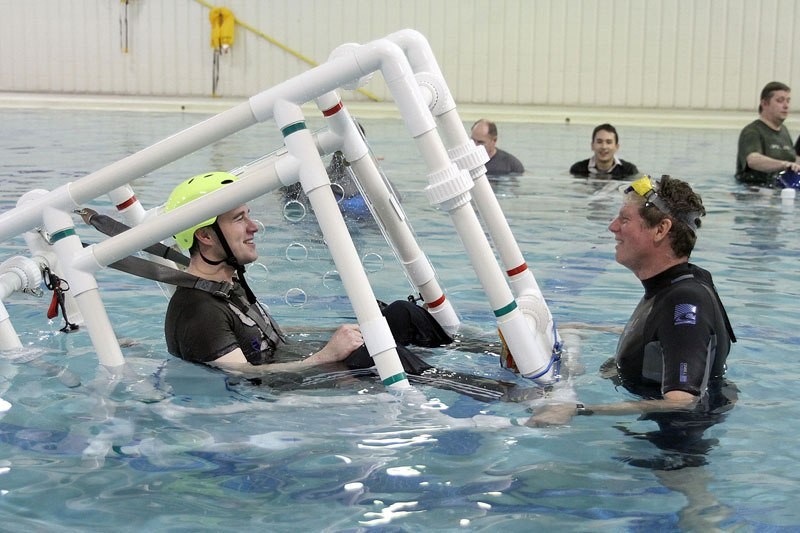When a pilot dumps a small plane in the water, there’s about 15 seconds to react and get out to safety.
Though rare, it can happen, and more frequently than one might think.
Bryan Webster has spent the past 15 years teaching pilots, frequent flyers. police and seasoned veterans the four steps they need to have ingrained in their minds to safely escape an unplanned lake or river landing.
The Victoria-based trainer, known in the business as ‘Bry the Dunker Guy,’ spent most of Friday passing on his knowledge to aspiring pilots in Confederation College’s float-plane aviation program.
“We run you through a similar, if there was an accident, scenario and that point they’re all done they’ll be very comfortable,” said Webster, who ditched his own plane in 1977.
“Usually it takes six to eight dunks and they’re up on top and away they go.”
Webster said he’s trained more than 5,000 people using his submerged aircraft fuselage egress program over the past decade-and-a-half, with more than a dozen pilots successfully utilizing the training to swim to safety after a crash.
“We put them and get them used to the fact they’re going to be upside down, which is very unusual and then teach them a four-part series, which basically find the door, open it and find a reference point, get your belt off and out the door,” Webster said.
“Once they’ve got it mastered and they’ve got their heart rate down it’s an imprint in their psyche and they never forget it.”
Robert Burough said he hopes he never has to put the training into practice. The pilot-in-training has already landed a job in Yellowknife after he graduates next month, but said he’s glad he’ll know what to do if he ever does get into trouble on the water.
It’s intimidating being dunked, but there’s nothing like experience to get out of a sticky situation.
“It’s definitely a unique experience and it will definitely help me in the future,” he said. “They definitely prepare you ahead of time.”
Burough said the classroom portion of the training, which is moving online next week, outlined a number of different actual scenarios and what was done to escape, before adjourning to Lakehead University’s pool for actual in-water training.
Catching on was pretty quick and a lot like other training they’ve received.
“The biggest thing about being a pilot is procedure. As long as you remember what to do next and where to do it, it happens pretty quickly.”
